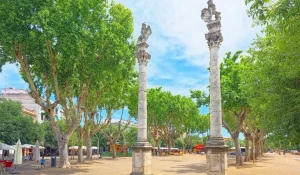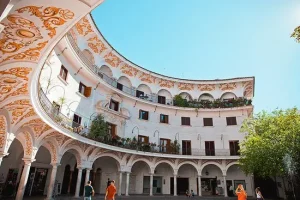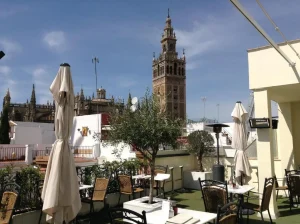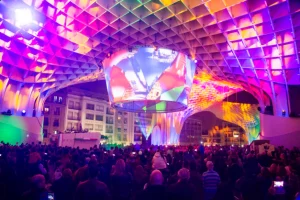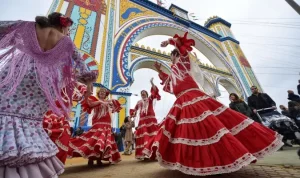#BEYONDTHEWALL: The Factories



To continue with our challenge #BeyondTheWall we want to write today about the old factories of Seville. Those ones that were abandoned and forgotten.
The old glass factory “La Trinidad”: Was situated at Miraflores street, close to the city center. Was built in 1900 and is one of the most beautiful examples of industrial arquitecture in our city of Seville. In 2002 was definitely closed.
Silk Factory of Santiago Pérez: Also situated at Miraflores street was built in 1917 like a mix of the typical regionalism and mudejar styles of the south of Spain. Nowadays we can appreciate the whole facade because some years ago was transformed in private apartments.
Royal Artillery factory of Seville Situated at San Bernardo’s neighborhood, also outside the old walls. Built in 1565 and used for the manufacture of weapons and bells, some sculptures like Giraldillo or the Lions of the Congress of Spain in Madrid. The factory suffered a reconstruction during 18th century and that period was the best thanks to the weapons and canons made for América. During the First World War was also so productive till 1991 when the goverment decided to cease the activity. Usually this building is closed but some months ago the citycouncil did some maintenance works and now we can visit the place where has some different exhibitions.
Cross Pirotechnics Factory: From 1847 this antique factory was restored some years ago. Now is one of the buildings of the University of Seville. The most popular area is call “The clock tower” one of the few examples of Art Decó in our city. The factory closed at the begining of 20th century and was used like a headquarter till the 60s, the was abandoned and despoiled till some years ago when we started the works for the Laws University.
Royal Tobacco Factory of Seville: Today this factory is situated in the city center but during 18th century was outside the city. Built by militar arquitects from the north of Spain and Netherlands it has a special design. Also has one of the most important Baroques façade in Seville and is one of the biggest buildings of the country. It deserves a visit to the building, gardens, chuch and the moats. Between 1954-56 we moved the factory to the other shore of the river and the building change to be the new main central office of University of Seville.

Altadis: The new building for the Tobacco Factory, situated in the new and modern neighborhood of Los Remedios and built during the middle 1950s. The style is contemporary industrial arquitecture, plain and built with typical red bricks. The factory closed in 2007 and since is abandoned. The current mayor is having some negotiations with the company “Altadis” to restore the area and create some gardens and a public place for the citizens. Do you know more factories in Seville? Share with us your info and opinion here or in our social networks with the #BeyondTheWall.

#BEYONDTHEWALL: The Factories
Estas disposiciones no fueron duraderas ni eficaces, pero nos habla de unos hechos a menudo desconocidos y de los que no se suele hablar, ni siquiera en los centros educativos. Pero merece la pena imaginar una Sevilla con un porcentaje llamativo de población negra, muchos de ellos llevando una carimba en el rostro, tal vez con el anagrama “ESCLAVO”, una S y un clavo (la primera que aparece en la imagen); aunque el carimbo se usó mayormente en las colonias americanas, mucho más difíciles de controlar por las autoridades. Otra curiosidad es que los hierros de carimbar se guardaban bajo llave en dependencias administrativas de la autoridad, o sea, que la carimba estaba perfectamente regulada por las leyes, y era como nuestros sellos de aduanas o de control de la CE o la matrícula en los coches, pues no se les consideraba más que mercancía. Y, además, por mandato real, los custodios y encargados de carimbar no podían cobrar por ello o cobrar, en todo caso, muy poco para evitar que se convirtiera en un negocio, como ya había ocurrido en algunos lugares.
Hasta 1679 no se suprimió la esclavitud indígena en los dos virreinatos y el carimbo aún tardaría un siglo más en ser prohibido completamente, ya en época ilustrada.

